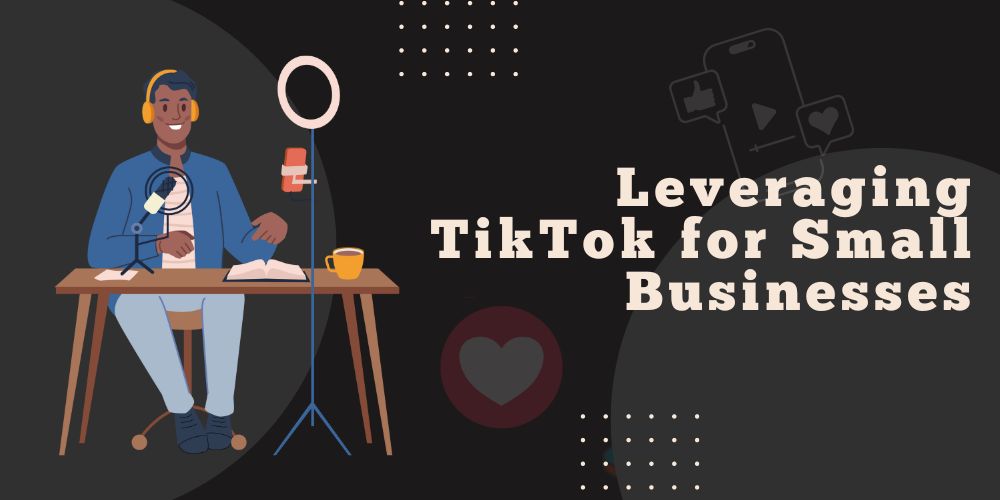Today’s customers expect more from businesses … They’re no longer looking for a sales pitch.
They want to be emotionally connected with the companies they do business with. They want to feel like they’re part of something bigger than just a transaction.
That’s where storytelling comes in …
Storytelling in marketing campaigns has become increasingly important as brands look to connect with their audiences on a more emotional level.
That’s because storytelling helps businesses create a meaningful connection with customers. When done right, it can tug at the heartstrings, inspire action, and create a loyal following that goes beyond just the products or services being offered.
This post will take a look at how storytelling can help your brand and will cover best practices for creating compelling stories that your customers will be drawn to.
What Is Storytelling?
Storytelling is a way of sharing a narrative or sequence of events with others in a way that captures their attention and imagination. It’s something we all do in our everyday lives, whether we’re sharing anecdotes with friends or family, recounting a funny incident that happened to us, or describing a scene or experience that left an impression on us.
Today, storytelling takes on many forms, from books and movies to podcasts and social media. Regardless of how that story is shared, the essence of storytelling remains the same – it’s all about connecting with others and conveying meaning through the power of language.
In marketing, a good story can capture the imagination of the audience, evoke emotions, and ultimately, influence their behavior.
5 Benefits Of Storytelling
By weaving a narrative into your messaging, you can create a more engaging and memorable experience for your audience. Here are some of the key benefits of storytelling in marketing:
1. Increased Brand Awareness
Storytelling can help create a strong brand identity that resonates with customers.
By telling a compelling story about your brand, you can increase awareness and recognition, and make your brand more memorable.
2. Improved Customer Engagement
A well-crafted story can capture a customer’s attention.
This emotional connection with your audience will help keep them engaged, motivate them and drive action.
3. Better Differentiation from Competitors
In today’s crowded marketplace, it can be challenging to stand out from the competition…
Storytelling can help to differentiate a brand by showcasing its unique values, mission, and vision.
4. Enhanced Brand Loyalty
Storytelling can create a deeper connection between a brand and its customers, leading to increased loyalty and advocacy.
By telling a story that aligns with your brand’s values, customers are more likely to identify with a brand and become loyal supporters.
5. Increased Sales
Ultimately, the goal of any marketing campaign is to drive sales.
Storytelling can be an effective way to do this thanks to the above benefits and more. By leveraging storytelling in your marketing campaigns, you can increase your bottom line and achieve long-term success.
The Importance Of Emotional Connection In Storytelling
Emotional connection is one of the most important aspects of storytelling in marketing campaigns. When customers feel an emotional connection with a brand, they’re more likely to become loyal customers.
Emotional connection can be created by tapping into the wants, needs and desires of your audience.
Your goal should be to make them feel understood and evoke an emotion, whether that is happiness, motivation, fear or something else entirely.
For example, a brand that is focused on helping people achieve their fitness goals might tell a story about how they helped someone transform their life through exercise. This kind of story would be more likely to create an emotional connection with customers who are looking to improve their fitness.
Best Practices When Marketing Through Storytelling
When you are telling a story to market your business, you need to follow some simple rules. Otherwise your story can quickly revert back to a traditional sales pitch.
- Don’t use business jargon – make sure your message is clear and understandable by someone who doesn’t have the same background as you.
- Be honest when telling your story – if it sounds too good to be true, your readers/listeners will pick up on it quickly.
- Be sure to tell a complete story – don’t leave any plot holes.
- Know who you are talking to – your story should resonate with your ideal customer, not everyone.
- Be detailed but don’t overcomplicate things – you want to leave room for imagination and allow your audience to put themselves into your story.
- Don’t push your CTA too much – every story used for marketing should have a clear and useful call to action that you shouldn’t have to oversell it. It should come naturally.
There are many different ways that you can use storytelling as part of your marketing campaigns. But one of the easiest places to start is with your own story.
Start From The Beginning: Creating A Brand Narrative
A brand narrative is the story of how your business came to be. It talks about how your brand started, what it stands for, how it works and what it hopes to achieve.
The purpose of this narrative is to help customers understand the essence of a brand and what it represents. It lays the groundwork for your business’ personality and brand identity so that you can create consistent messaging and visual elements that reflects who you are.
By telling a compelling brand narrative, marketers can create an emotional connection with their customers that goes beyond just the products or services they offer.
RELATED: The importance of brand consistency in marketing …
How To Write A Brand Narrative
The key to a successful brand narrative is to create a story that resonates with the target audience. A brand narrative that is authentic, relatable, and relevant to the audience is more likely to be successful.
For example, a brand that is focused on sustainability might tell a story about their efforts to reduce their carbon footprint and their commitment to protecting the environment. This kind of story would be more likely to resonate with consumers who are passionate about environmental issues.
When creating your story, be sure to cover these steps:
- Define Your Brand Identity: Your brand narrative should be an extension of your brand identity, which is the personality and values that define your brand. Start by clarifying your brand’s core values, mission, and vision.
- Know Your Target Audience: Your brand narrative should resonate with your target audience. Understand their needs, wants, and motivations to craft a narrative that connects with them emotionally.
- Develop a Compelling Story: A brand narrative should tell a story that engages your audience and brings your brand to life. It should be a compelling and memorable story that people can relate to and that conveys your brand’s purpose, values, and unique selling proposition.
- Use Emotion and Imagery: Emotion and imagery are powerful tools for creating a strong brand narrative. Use them to evoke emotions and create a visual representation of your brand that is both compelling and memorable.
- Be Authentic and Consistent: Your brand narrative should be authentic and consistent with your brand identity. Ensure that your brand narrative aligns with your brand values, mission, and vision, and that it remains consistent across all touchpoints.
- Test and Refine: Finally, test your brand narrative with your target audience and refine it based on feedback. Continuously monitor your brand narrative’s performance and adjust it as needed to ensure that it continues to resonate with your audience.
How To Create A Strong Story
In order to create a compelling story, there are several key elements that you should consider.
Clear Message
Every good story needs to have a clear message.
It’s important to define the specific goal of your marketing campaign, whether it’s to increase brand awareness, drive sales, or encourage customer loyalty.
The story you tell should align with this goal and communicate it clearly to your audience.
Relatable Protagonist
Your audience needs someone to root for. Someone they can see themselves in.
By creating a relatable protagonist, you can help your audience feel more invested in your brand and the story you’re telling. This could be a customer who has had a positive experience with your brand, or it could be a fictional character that represents your target audience.
Conflict
Conflict creates tension and keeps your audience engaged.
The conflict you choose could be a problem that your brand is trying to solve, a challenge that your protagonist needs to overcome, or even an obstacle that your audience needs to overcome in order to achieve their goals.
By introducing conflict, you can create a sense of urgency and keep your audience interested in what happens next.
Resolution
No story would be complete without a resolution.
Your audience needs to see that the conflict has been resolved and that your brand or protagonist has achieved their goal. This could be a happy ending, a triumphant victory, or simply a sense of satisfaction that comes from solving a problem.
The resolution should tie back to your original message and leave your audience feeling positive about your brand.
Memorable
By creating a memorable story, you can increase the chances that your audience will remember your brand and take action in the future.
This could be achieved through catchy phrases, memorable characters, or even just a clever twist at the end of the story.
Why You Need Storytelling For Your Brand
The art of storytelling in marketing campaigns is a powerful tool that can help brands create a lasting emotional connection with their customers.
By creating a compelling brand narrative, tapping into the emotions of the audience, and reinforcing the brand identity, marketers can create a powerful story that resonates with their target audience.
With the right storytelling approach, you can connect with your customers on a deeper level and create a loyal customer base that will be with you for years to come.







